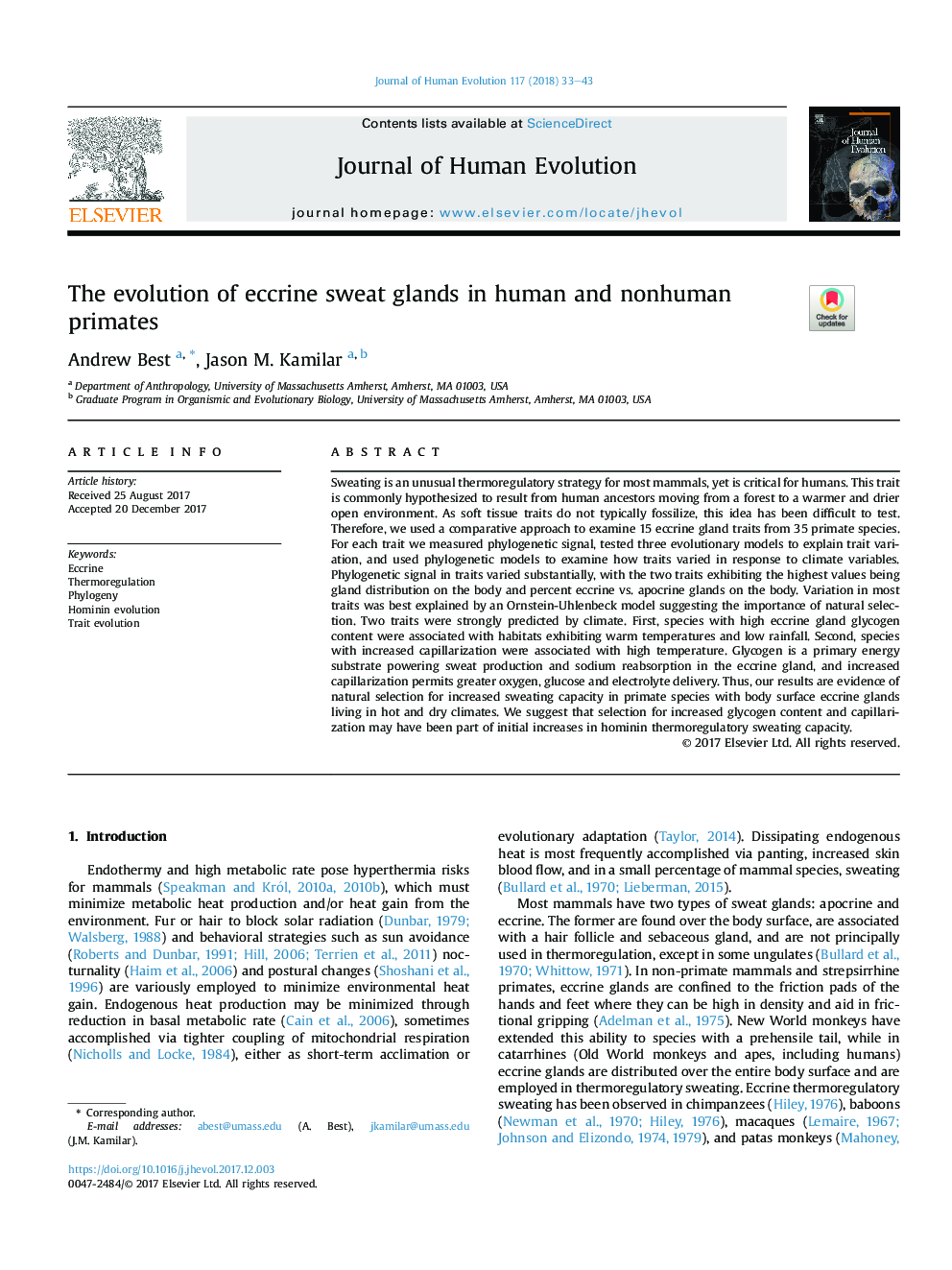| کد مقاله | کد نشریه | سال انتشار | مقاله انگلیسی | نسخه تمام متن |
|---|---|---|---|---|
| 8887292 | 1628132 | 2018 | 11 صفحه PDF | دانلود رایگان |
عنوان انگلیسی مقاله ISI
The evolution of eccrine sweat glands in human and nonhuman primates
ترجمه فارسی عنوان
تکامل غدد عرق اکریین در اولات های انسانی و غیر
دانلود مقاله + سفارش ترجمه
دانلود مقاله ISI انگلیسی
رایگان برای ایرانیان
کلمات کلیدی
اکریئن، تنظیم حرارتی، فیلوژنی تکامل هومیین، تکامل ویژگی،
موضوعات مرتبط
علوم زیستی و بیوفناوری
علوم کشاورزی و بیولوژیک
بوم شناسی، تکامل، رفتار و سامانه شناسی
چکیده انگلیسی
Sweating is an unusual thermoregulatory strategy for most mammals, yet is critical for humans. This trait is commonly hypothesized to result from human ancestors moving from a forest to a warmer and drier open environment. As soft tissue traits do not typically fossilize, this idea has been difficult to test. Therefore, we used a comparative approach to examine 15 eccrine gland traits from 35 primate species. For each trait we measured phylogenetic signal, tested three evolutionary models to explain trait variation, and used phylogenetic models to examine how traits varied in response to climate variables. Phylogenetic signal in traits varied substantially, with the two traits exhibiting the highest values being gland distribution on the body and percent eccrine vs. apocrine glands on the body. Variation in most traits was best explained by an Ornstein-Uhlenbeck model suggesting the importance of natural selection. Two traits were strongly predicted by climate. First, species with high eccrine gland glycogen content were associated with habitats exhibiting warm temperatures and low rainfall. Second, species with increased capillarization were associated with high temperature. Glycogen is a primary energy substrate powering sweat production and sodium reabsorption in the eccrine gland, and increased capillarization permits greater oxygen, glucose and electrolyte delivery. Thus, our results are evidence of natural selection for increased sweating capacity in primate species with body surface eccrine glands living in hot and dry climates. We suggest that selection for increased glycogen content and capillarization may have been part of initial increases in hominin thermoregulatory sweating capacity.
ناشر
Database: Elsevier - ScienceDirect (ساینس دایرکت)
Journal: Journal of Human Evolution - Volume 117, April 2018, Pages 33-43
Journal: Journal of Human Evolution - Volume 117, April 2018, Pages 33-43
نویسندگان
Andrew Best, Jason M. Kamilar,
